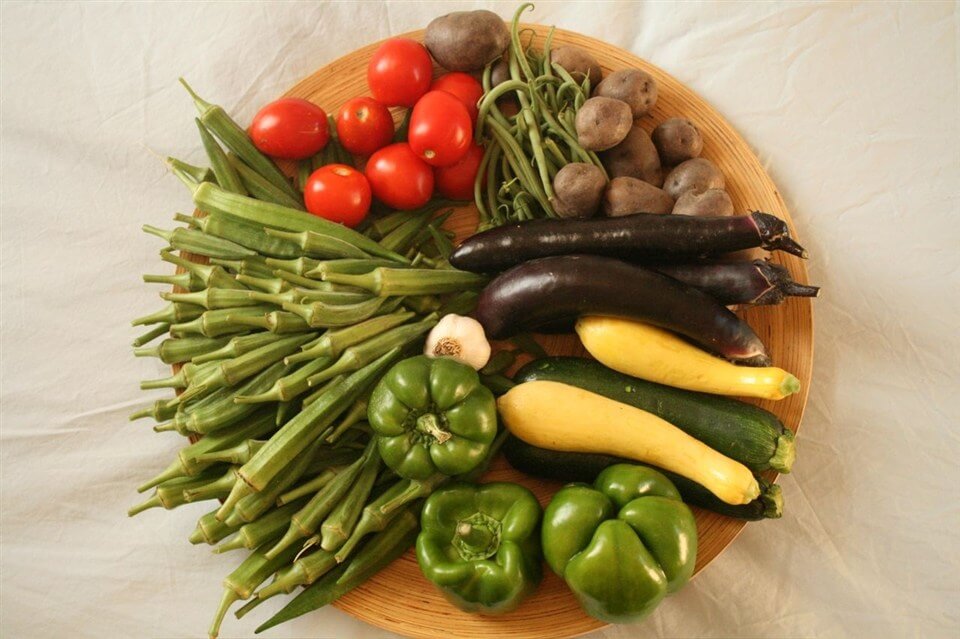The terraced hill just west of CA’s dining hall looks like the photograph from the double-truck feature in Sunset Magazine. The vegetable, fruit, and herb garden is about to relinquish its bounty of a dozen kinds of vegetable plants including eggplant, rhubarb, peppers, squash and tomatoes, to the more than a dozen kinds of herbs (ever had chocolate basil?), as well as the grape vines, and espalier-trained and grafted apple trees. Late many summer afternoons, you’ll find CA Executive Chef Paul Worley tending the crops, trading his chef’s coat for gardening gloves. “This is a chef’s dream,” admits Worley, who uses goods from the garden to flavor and supplement dishes in the CA kitchen.
While the garden will not provide enough produce to offset costs or even create entire dishes once all 900-plus students and the more than 125 faculty and staff return for the start of school, Worley says it is as much about the educational and creative process as it is about food preparation.
“If students can get an appreciation for what some of these plants look like, or how much room it really takes to grow crops like cucumbers, squash, or pumpkins, then that is important,” says Worley. “Too many people, chefs included, don’t know where their food comes from,” he says. And to be able to have the garden outside the kitchen door is an added bonus. “It is so satisfying from a creative culinary point of view to pick something, prepare a meal with it, and to have it be something truly wonderful,” says Worley.
The garden was planted as part of a CA Upper School Interim program led by history teachers Jim Blanas and Paul Kim. The first year, students had to dig up sod and create the garden beds. The second year of the program, students fenced in the beds with chicken wire to protect the plants. The 2011 Interim was a heavy construction year, with the installation of wood beams, fencing, and archways between the beds. Each year, more and more plants are added.
Worley says the garden now supports its own mini-ecosystem of butterflies and other insects that are attracted to the flowering plants, but keeps out the rabbits and squirrels. He says he hasn’t been able to keep out the occasional human tomato thief, an especially frustrating occurrence when he has planned something special with the about-to-be-ripe produce. Regardless, Worley says the garden construction and growing procedures meet the highest standards for food safety and locally-grown gardening, with the food just ten yards from the kitchen. And, he says, you can’t beat the freshness standard.
As long as the weather holds, students may also dine outdoors next to the garden, or stop by for a quick tour of what’s planted inside. And now, in addition to special food labeling in the Dining Hall that identifies Organic or Gluten Free foods, look for labels that denote food that is Homegrown in the CA Garden.
